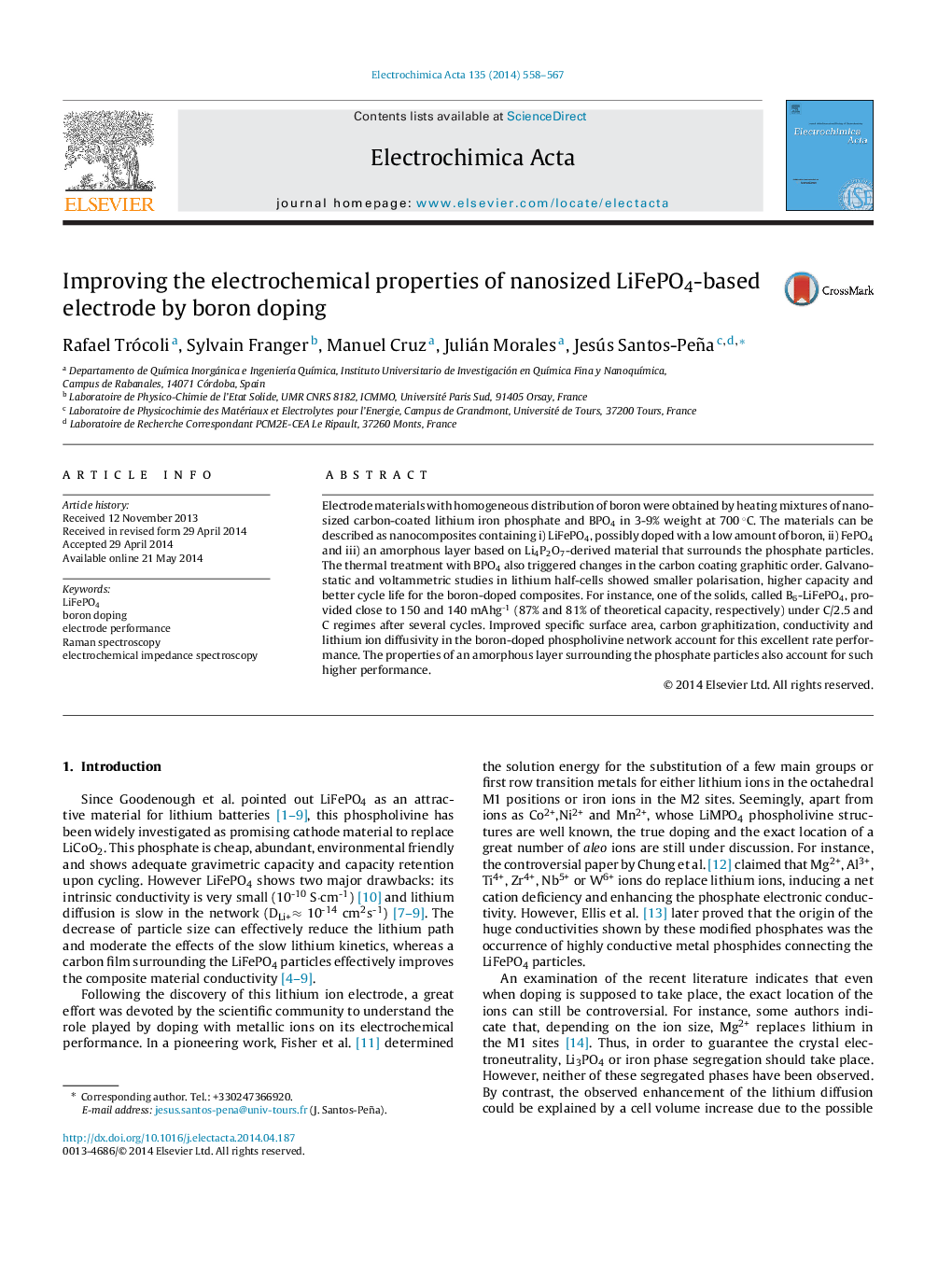| Article ID | Journal | Published Year | Pages | File Type |
|---|---|---|---|---|
| 6613699 | Electrochimica Acta | 2014 | 10 Pages |
Abstract
Electrode materials with homogeneous distribution of boron were obtained by heating mixtures of nanosized carbon-coated lithium iron phosphate and BPO4 in 3-9% weight at 700 °C. The materials can be described as nanocomposites containing i) LiFePO4, possibly doped with a low amount of boron, ii) FePO4 and iii) an amorphous layer based on Li4P2O7-derived material that surrounds the phosphate particles. The thermal treatment with BPO4 also triggered changes in the carbon coating graphitic order. Galvanostatic and voltammetric studies in lithium half-cells showed smaller polarisation, higher capacity and better cycle life for the boron-doped composites. For instance, one of the solids, called B6-LiFePO4, provided close to 150 and 140 mAhg-1 (87% and 81% of theoretical capacity, respectively) under C/2.5 and C regimes after several cycles. Improved specific surface area, carbon graphitization, conductivity and lithium ion diffusivity in the boron-doped phospholivine network account for this excellent rate performance. The properties of an amorphous layer surrounding the phosphate particles also account for such higher performance.
Keywords
Related Topics
Physical Sciences and Engineering
Chemical Engineering
Chemical Engineering (General)
Authors
Rafael Trócoli, Sylvain Franger, Manuel Cruz, Julián Morales, Jesús Santos-Peña,
